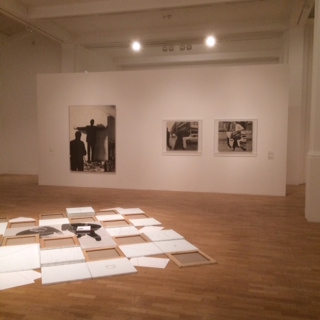
Essere o non essere may be Hamlet’s great question, but Giulio Paolini has appropriated it as the title for his show at the Whitechapel gallery, on until September 14th. Organised together with the MACRO in Rome, this is the first major exhibition of Paolini’s work in the UK for 35 years. It focuses on his interest in looking, contemplation and the links between artist, art work and viewer. Works since the 1960s are on display as is a new piece, given a veritable short story for a title: The author who thought he existed (Curtain:Darkness falls over the Auditorium).

Paolini is a leading conceptual artist with a large body of work built up over five decades. He has developed his own idiosyncratic artistic language, working with recurring media such as Perspex, photographic emulsions and blank canvases. Repetition of materials occurs within and between works. Rather than seeing artists as geniuses he regards them as merely messengers, a democratic view that leads to the viewer becoming paramount to the completion of the work.
Big Bang places the artist in the middle of his creation. This is created not from perfectly formed ideas as artist-as-genius might suggest, but rather from the detritus of a day at the office. On the floor around a central chair lie scrunched up pieces of paper, discarded artworks which appear to make up a solar system circulating around the artist’s seat. The creator is missing though. Having put it all in motion yet not found the solution he wanted, he has headed off to the pub. Elsewhere a pencil stands at the centre of a perspex table, artworks circulating around, as though the artist has regained his place as the central figure. Again the artist is gone, though this time his exit seems more violent. His chair isn’t just empty, it has been kicked over. He hasn’t chosen to leave, he’s been frog-marched away. Creation appears too difficult, yet even the struggle has left a work behind.
Paolini’s works are wrapped up in his ongoing art world interests. He attempts to play games with existence and looking, artistic presence and disappearance. Who is observing whom? Where is the artist? When does an artwork come into being? It is dry, introspective stuff, without Hamlet’s gravediggers scene to lighten the mood and give a different perspective.

Leave a Reply